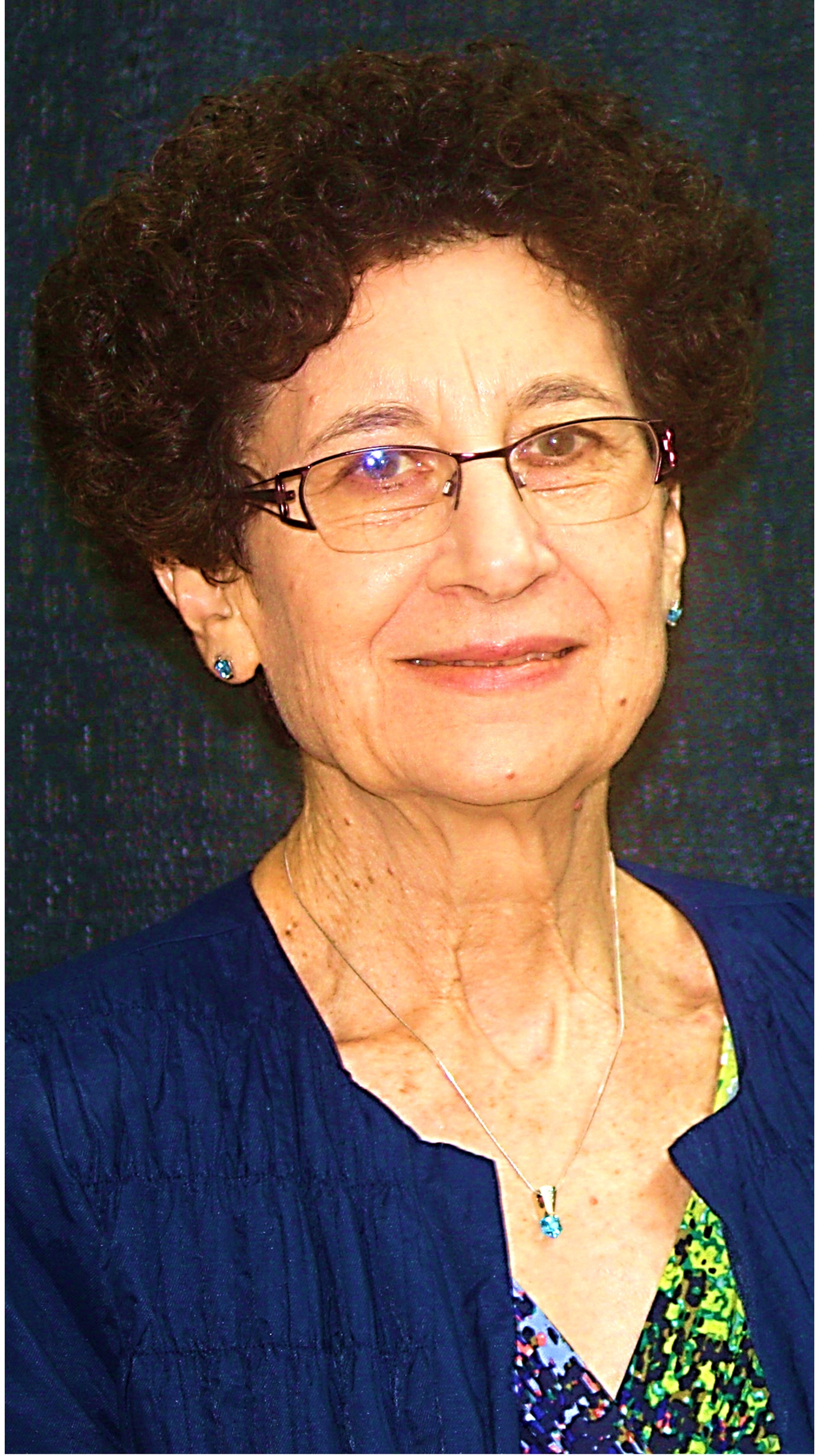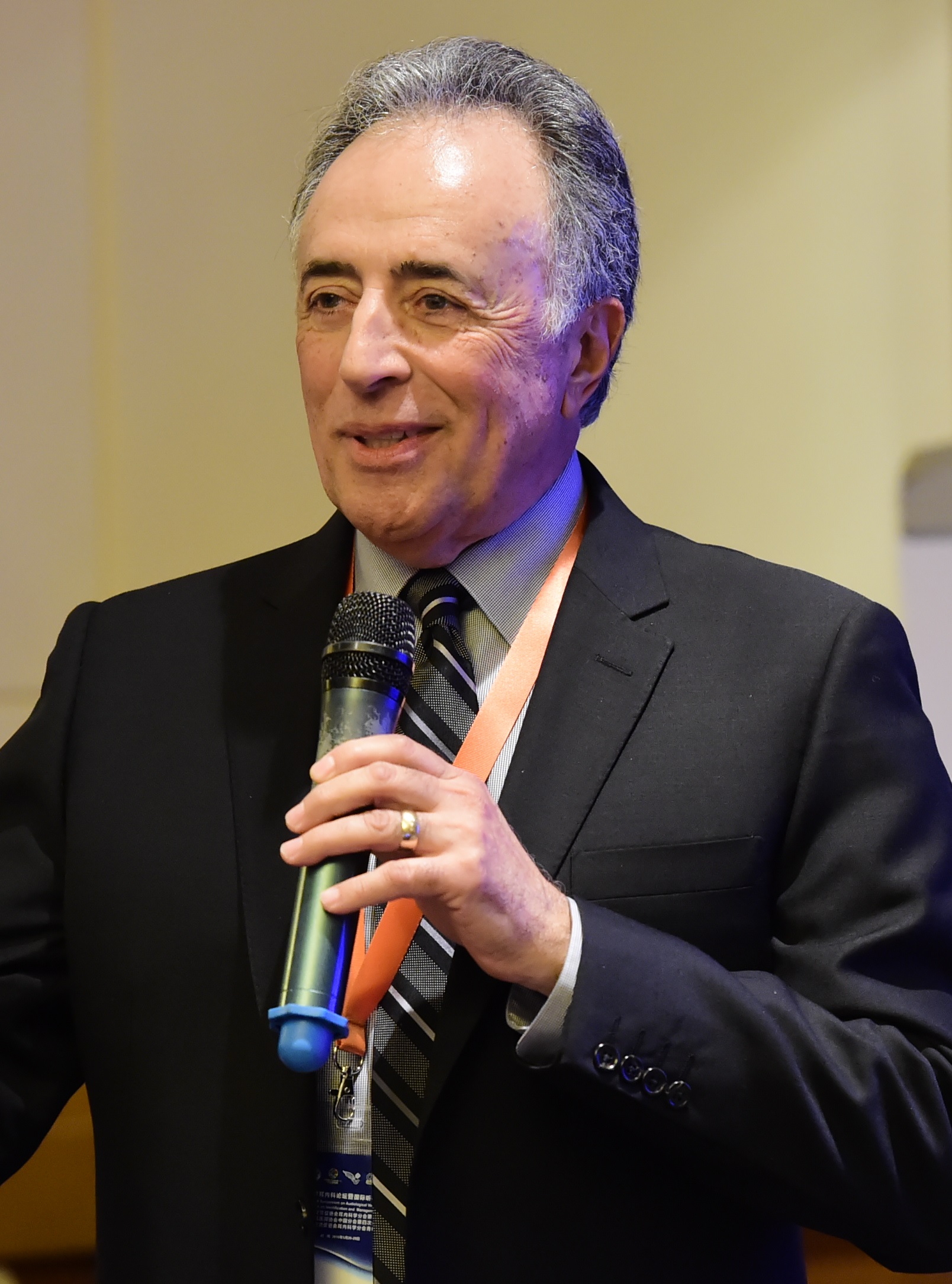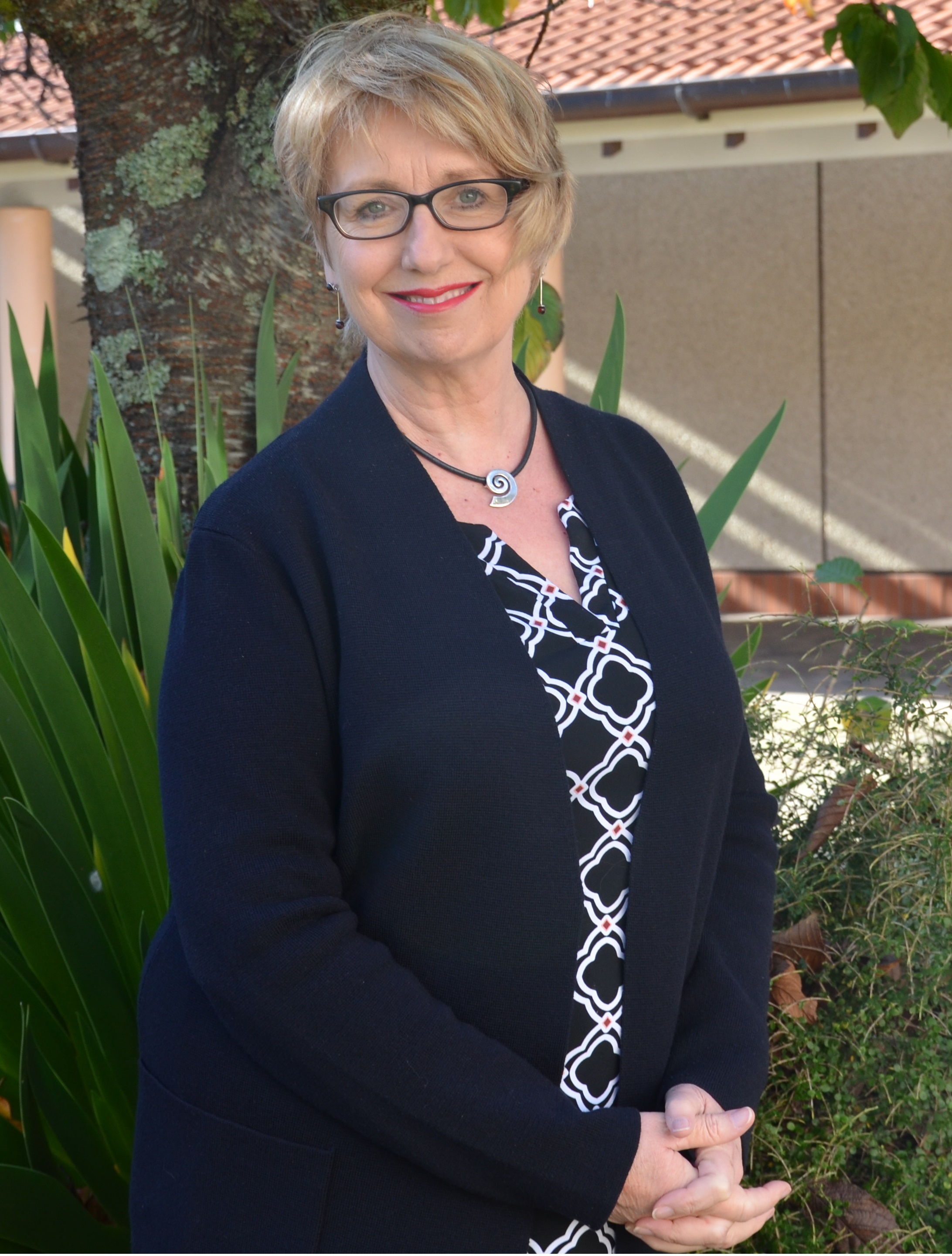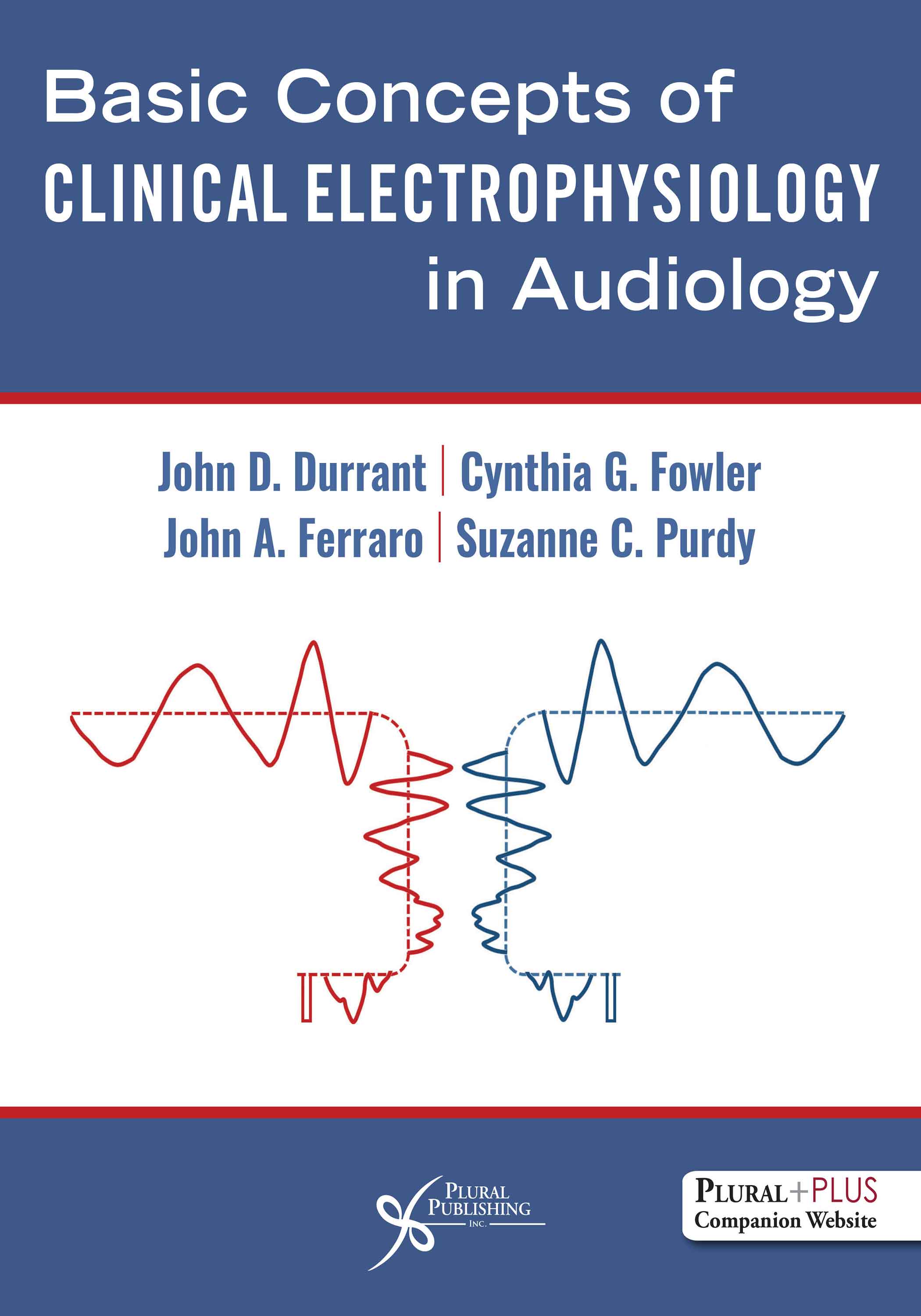
Basic Concepts of Clinical Electrophysiology in Audiology
First Edition
John D. Durrant, Cynthia G. Fowler, John A. Ferraro, Suzanne C. Purdy
Details: 475 pages, B&W, Hardcover, 8.5" x 11"
ISBN13: 978-1-63550-175-9
© 2023 | Available
For Instructors
Purchase
Basic Concepts of Clinical Electrophysiology in Audiology is a revolutionary textbook, combining the research and expertise of both distinguished experts and up-and-coming voices in the field. By taking a multidisciplinary approach to the subject, the editors of this graduate-level text break down all aspects of electrophysiology to make it accessible to audiology students. In addition to defining the basics of the tools of the trade and their routine uses, the authors also provide ample presentations of new approaches currently undergoing continuing research and development. The goal of this textbook is to give developing audiologists a broad and solid basis of understanding of the methods in common or promising practice.
Throughout the text, individual chapters are divided into “episodes,” each examining a facet of the overarching chapter’s topic. With different experts handling each episode, readers are exposed to outstanding professionals in the field. This text singularly stitches together the chapters and their episodes to build from foundational concepts to more complex issues that clinicians are likely to face on their road to full clinical competency. As collections of episodes, the writers and editors thus endeavor to present a series of stories that build throughout the book, in turn allowing readers to build a broader interest in the subject.
Key Features
- Heads Up sections in each chapter introduce more advanced content to expose readers to what lies beyond the basic level and further enhance the main chapter content and “entertainment value”
- Take home messages at the end of each chapter serve to focus the reader’s attention, encourage review, and discourage superficial learning by “just reading the abstract”
- More than 450 innovative illustrations use combinations of panels, insets, and/or gray tone to facilitate reader understanding, optimize portrayal of data, and unify concepts across chapters
- Numerous case studies and references to practical clinical issues and results are included throughout the book
- Keywords are highlighted in-text to improve both attention and retention of critical terms and ease of returning to review them
- For instructors, access to the PluralPlus companion website with PowerPoint lecture slides
Reviews
“…This volume is very comprehensive in that it covers almost all fields that relate to the clinical electrophysiology of hearing. There are sections on acoustics and signal calibration, basic science aspects of neural excitation, followed by a systematic trip from the cochlea to cortex. Throughout this coverage there is detail about sources of evoked potentials and interpretations about underlying neural processing. The chapters are scientific in the sense that they reflect recent new knowledge with appropriate source papers well-referenced. I personally gained from reading this volume, and suggest that it will be of similar value for those already involved (including the contributing authors) who want to get a bigger picture of their field of study.
To make this book serve many other purposes, the authors have presented the work as being both an educational tool for training hearing healthcare clinicians and scientists, and a practical resource for those already in clinical practice. This is a difficult task. The former goal is met with a preface including a “Special Message to Student Readers” and a “Special Message to Instructors Adopting This Textbook”. These sections provide very useful and important advice for those in the educational realm. The second purpose of the volume is to help clinicians make use of electrophysiological methods for diagnosis and for an increased understanding of hearing disorders. To this end most chapters contain some reference to clinical application implicitly or explicitly stated. In addition, there are numerous “Heads Up” sections which pose clinically relevant questions and provide useful advice. The final chapters of the book also concentrate on clinically related problems in audiology. As an experienced academic in this field of auditory electrophysiology I found this book to be highly satisfying as a comprehensive bible of the specialty to date… for an experienced hearing healthcare professional or a basic scientist in the field it represents a valuable primary source for the current knowledge base.”
–Robert V. Harrison, PhD, DSc, University of Toronto & The Hospital for Sick Children, from the Canadian Audiologist (2022)
“In the introductory chapters 1 to 4, the basics of clinical electrophysiology from signal generation, calibration, electrode assembly to the formation, registration, source analysis and signal extraction of Auditory Evoked Potentials are comprehensively presented both in terms of time and frequency.
Chapter 5 is dedicated to the very early AEPs of the peripheral hearing system, which can be registered using electrocochleography (ECochG)….
The following sixth chapter is devoted to the most frequently used recording of brain stem responses using the ABR and ASSR techniques…
Chapter 7 is dedicated to the recording of medium-latency responses (MLRs) and ASSRs that arise in subcortical and cortical regions. …
…The large group of these LLRs, consisting of the classical exogenous event-related potentials (ERPs) and the endogenous cognitive potentials (MMN, P3) are comprehensively presented in Chapter 8. Here, too, all relevant aspects of generation, recording, sources, maturation and aging processes, as well as the clinical use and research aspects of the LLR in the context of differential diagnostics can be found.
The following chapter 9 is dedicated to the difficulty-to-test patients. Here, the basics of newborn hearing screening, problems of threshold estimation and bone conduction BCERA, questions of sedation and problems with simulation and interference are presented. In this chapter you will also find an up-to-date overview of the registration of AEPs with CI patients.
In the final chapter 10, the exciting methods of source analysis, brain mapping, neuromonitoring, recording of evoked magnetic fields and functional imaging are presented, which give us new insights into the normal and pathologically altered processes of our hearing system.
…It has been a very long time since such a comprehensive work has been published, which combines all aspects of clinical electrophysiology to record the AEP evoked in one volume and addresses students as well as clinically and scientifically interested experts. It provides valuable information for the clinical-practical use of the AEP and new scientific approaches. It should not be missing in any library!
–Martin Walger, Zeitschrift fur Audiologie (review translated to English) (December 2022)
“…The book is a graduate-level text that breaks down all aspects of human electrophysiology for audiologists. Apart from the team of four main authors and an editor-in-chief, the book is a work of art by a long list of illustrious authors from what I count as 14 different countries.
… The complete volume has 475 crisp pages that will quench the thirst of any audiologist who wants to understand the scientific principles behind human electrophysiology and attain a certain grasp of the subject matter. If you routinely perform electrophysiological testing and are unsure about any aspects -look no further… This book has impressive details on everything you need to know on this subject. Taking the journey through all of the 10 chapters in the book one by one is akin to travelling to places of great culture, which opens up horizons of our thinking. There is just an amazing amount of information packed up in words, diagrams and the illustrations here.
… Basic and indeed some advanced concepts are explained clearly and in a practical way. Pretty much all areas of auditory electrophysiological testing are covered. There is good information on concepts, techniques and process of measurement. Be it electrocochleography, brainstorm responses, middle or late responses, or cortical responses, it is all covered here. I also liked the chapter on difficult-to-test population that has some great tips and tricks…
I think it is abundantly clear from the above that I liked this book very much. It hits the metaphorical nail on the electrophysiological head. It should be a great resource for all graduate-level audiology students and clinicians practising in this area….”
–Jay Jindal, Consultant Audiologist; CEO, Audiology Planet, in ENT & Audiology News (January/February 2023)
“…Basic Concepts of Clinical Electrophysiology in Audiology is a comprehensive textbook taking a multidisciplinary approach to the topic. It is comprised of 10 chapters with contributions from 40 distinguished experts across the globe in a variety of fields ranging from medicine and health sciences to engineering. The editors place great importance on evidence-based practice as each chapter builds on the previous in a narrative-like approach detailing the journey of evoked responses from the cochlea to the cortex.
…As a young audiologist in the diagnostic space, what I found of particular value in this book were the tips and tricks embedded throughout the text that help address the challenges of extracting signals of interest in less-than-ideal circumstances.
The ‘heads up’ segments at the end of each chapter were also a stand-out feature of the text. These sections set it apart from other published works in the field…They spur interest in budding audiologists and allow those already practicing to question how broadly they can expand their clinical practice. Often, these segments include case studies that act as good reminders of clinical applications and the audiologist’s role beyond the clinic room.
…The friendly tone of the authors, the clever analogies incorporated throughout and the detail with which each topic is covered allow the reader to feel well placed to tackle these complex topics. In addition, the logical structure of the chapters makes it easy for a seasoned audiologist to return for a quick refresher or to explore a new area of interest.
Overall, I feel this textbook is an excellent resource for audiology students, graduates, and professionals looking to expand their knowledge in the clinical electrophysiological space of audiology. Even those who have extensive in the field have a lot to gain from reading this book as it perfectly sums up theories, techniques and clinical practices whilst simultaneously inviting the reader to pose questions for future research.”
–Monica Fakhry from Audiology Australia (April 2023)
Foreword by José J. Barajas de Prat
Preface
Special Message to Student Readers and Others Aspiring toward Competent Use of Clinical Neurophysiology in Audiology
Special Message to Instructors Adopting This Textbook
Acknowledgements
Contributors
Dedication
Chapter 1. Basic Concepts of Clinical Electrophysiology in Audiology
Prequel—A Peek at the Auditory Evoked Potentials and Areas of Application
John D. Durrant
Heads Up: Like in Space, Takes Time to Travel along the Auditory Pathway—So What?
Chapter 2. Signals and Systems Essentials
Signal Generation, Analysis, and Conditioning—Analog versus Digital Perspectives
J. Robert Boston and John D. Durrant
Temporal versus Spectral Views: The Saga Continues—Impulsive versus Steady State
W. Wiktor Jedrzejczak
Heads Up. Prequel 2: Why Are Computers So Important in This Area of Audiology and Are They Everywhere?
Rafael E. Delgado
Signal-Issues Particular to Stimulating the Auditory System and the Importance of Being Calibrated
Robert Burkard
Heads Up: Wideband Transmission and the Middle Ear Bottleneck
M. Patrick Feeney
Chapter 3. Electrically Connecting to Humans to Access Their Auditory Neurosensory Systems
Bioelectric Basics, Interface Dilemmas, and Electrode Montages/Caps—One Size Fits All?
John D. Durrant, Krzysztof M. Kochanek, and Lech K. Śliwa
Functional Neuroanatomy of ‘AEP Space’ and Underlying Neurophysiological Bases
Frank E. Musiek
Heads Up: Need That Like a Hole in the Head? What about a Nail? A Case in Point!
Christopher D. Bauch and Wayne O. Olsen
Chapter 4. Stimulating the Auditory System and the How and Why of an “Evoked” Response
Extracting the Response’s Signal from Noise Background
Steven L. Bell
The Good, Bad and Ugly?—Optimizing Response Extraction from Background Noise and How Signal Processing May Become Too Much?
Ozcan Ozdamar and John D. Durrant
Heads Up: Interlude—And You Don’t Even Have to Raise Your Hand When You Hear the Beep
John D. Durrant, Cynthia G. Fowler, and Suzanne C. Purdy
Chapter 5. Evoking Responses of the Peripheral Auditory System
First Sign Something’s Going on in There: An Acoustic Response of the Inner Ear
Jacek Smurzynski
Heads Up: Otoacoustic Emission without Turning on Sound? Who Knew?
W. Wiktor Jedrzejczak
CM, SP, and AP: Not Alphabet Soup and First-Signs AEPs Are Afoot!
John D. Durrant and John A. Ferraro
Electrocochleography: How Do Electrical Signals Get from the Hearing Organ to the “Outside” and What Good Are They?
John A. Ferraro and John D. Durrant
Heads Up: Intriguing ECochG App: Sensing Weakened Wall of Semicircular Canal
John D. Durrant, John A. Ferraro, and José Juan Barajas de Prat
What More Can Electrocochleography Teach, Including about What to Expect Later?
Martin Walger
Chapter 6. Evoking Responses of the Central Auditory System: Testing the Brainstem
Brainstem Auditory Evoked Potential: General Interpretation—Its Nature and Peripheral Versus Central Systems Aspects
George A. Tavartkiladze
Heads Up: Binaural Interaction in Auditory Brainstem Potentials?
Cynthia G. Fowler
Brainstem Responses to Complex Stimuli—Frequency and Envelope Following Responses
David Purcell and Viji Easwar
Heads Up: Speech-Evoked EFR and FFR
Ananthanarayan Krishnan
Auditory Steady-State Response—80-Hz Response
Maria C. Perez-Abalo
Evoked Potential Audiometry using Auditory Brainstem Response/Auditory Steady-State Response Measurements
Susan A. Small
Differential Diagnostic Applications
Cynthia G. Fowler and Jun Ho Lee
DOUBLE-HEADERs Up
Heads Up: Differential Diagnostic Case Studies and the Challenge of Auditory Neuropathy
Jun Ho Lee and José Juan Barajas de Prat
Heads Up: Postauricular Muscle Response—Friend/Foe/Why Care?
Suzanne C. Purdy
Chapter 7. Testing Midbrain and Cortical Projection Pathways
Auditory Middle Latency Response and 40-Hz Auditory Steady-State Response—Signals en Route to the Cortex
Joaquín T. Valderrama-Valenzuela
Why Evoked Response Audiometry (ERA) Using AMLR or 40-Hz ASSR Measures
Cynthia G. Fowler and So E. Park
Differential Diagnostic Applications of AMLR
Thierry Morlet and So E. Park
Heads Up: BIC Update—Whither Beyond Pontine CANS?
Cynthia G. Fowler and So E. Park
Chapter 8. Cortical Level Testing
Call Them Late, But They Were the Frist AEPs for Practical ERA—LLRs
Barbara K. Cone
Why ERA Using Cortical Response Measurement
Linda J. Hood, Rafael E. Delgado, and Abreena I. Tlumak
Heads Up: A Case Spared of Operative Treatment Thanks to Testing of Both Brainstem and Cortical AEPs
John D. Durrant and Martin Walger
Late-Late Shows in AEPdom—Beyond Obligatory Potentials: When Just Turning on the Same Stimulus Is Not Enough
Mridula Sharma
DOUBLE-HEADERs Up
Heads Up: Peek at EEG Analyses via Advanced Signal Processing
Ronny K. Ibrahim and Mridula Sharma
Heads Up: The Change Potential—Sometimes What’s Later Tells More
Fabrice Bardy
Chapter 9. Difficult-to-Test Patients—General Methods and Newborn Screening
Screening Hearing Responses Versus Threshold Estimation and Estimating Audiometric Configuration
Monica J. Chapchap and Patricia C. Mancini
Bone Conduction Testing—A Special Challenge, Yet Efficacious With Understanding
Susan A. Small
Testing Patients under Natural Sleep or Medically Induced Sedation/Unconsciousness
Diane L. Sabo
Heads Up: Testing Patients Who “Exaggerate” Their Hearing Thresholds
John D. Durrant and Cynthia G. Fowler
Testing Patients with Cochlear or Brainstem Implants
Andy J. Beynon
Chapter 10. Testing Potentially Beyond Hearing-Related Yet of Interest in Audiology the Profession
Heads Up: Not Only Electric Fields, Magnetic Fields Too—Confirming Origins
John D. Durrant, David L. McPherson, and Lionel Collet
Quick Look at Intraoperative Neuromonitoring and Other Evoked Potentials
Abreena I. Tlumak and John D. Durrant
Heads Up: A Case of Elective Surgery That Could Have Gone Badly Were It Not for IONM
John D. Durrant and Abreena I. Tlumak
Whose Land Is This?
Suzanne C. Purdy
Index
INSTRUCTOR: Basic Concepts of Clinical Electrophysiology in Audiology comes with access to supplementary teaching materials on a PluralPlus companion website.
To access the materials, you must contact Plural Publishing, Inc. to be verified as an instructor and receive your access code.
Email: instructormaterials@pluralpublishing.com
Tel: 866-758-7251 (U.S. toll free) or 858-492-1555
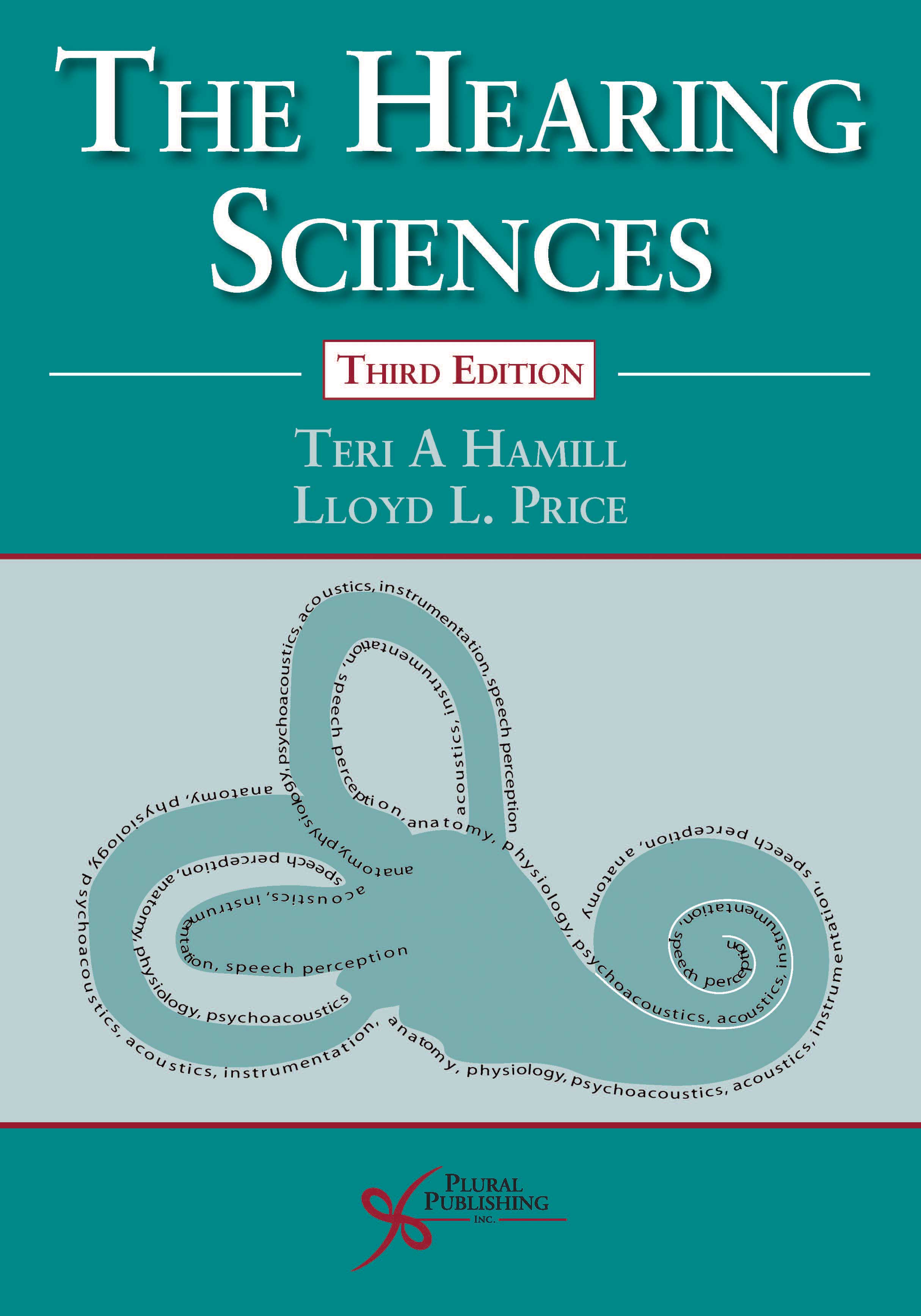
The Hearing Sciences
Third Edition
Teri A. Hamill, Lloyd L. Price
Details: 637 pages, B&W, Softcover, 8.5" x 11"
ISBN13: 978-1-94488-363-8
© 2019 | Available
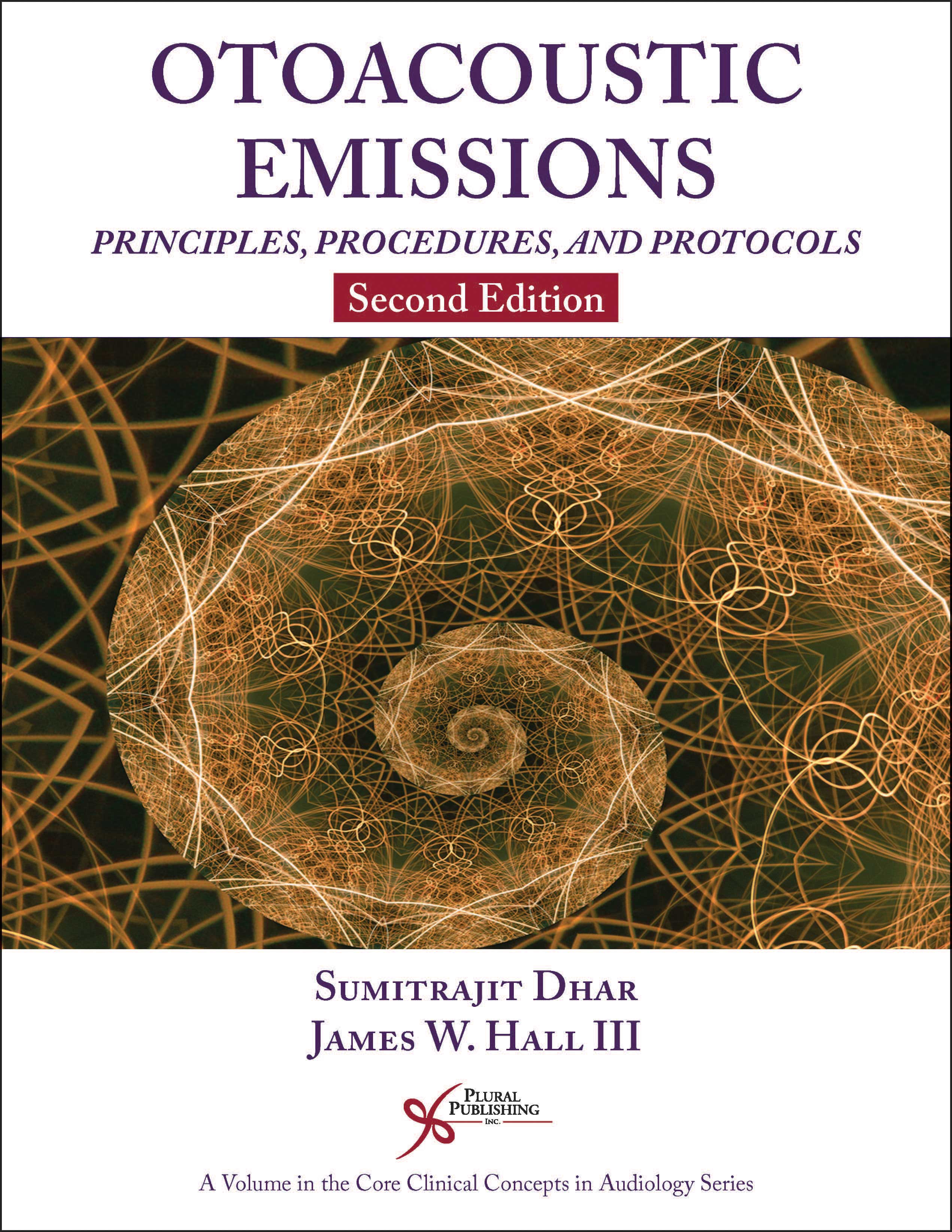
Otoacoustic Emissions: Principles, Procedures, and Protocols
Second Edition
Sumitrajit Dhar, James W. Hall, III
Details: 293 pages, 2-Color, Softcover, 8.5" x 11"
ISBN13: 978-1-94488-385-0
© 2018 | Available
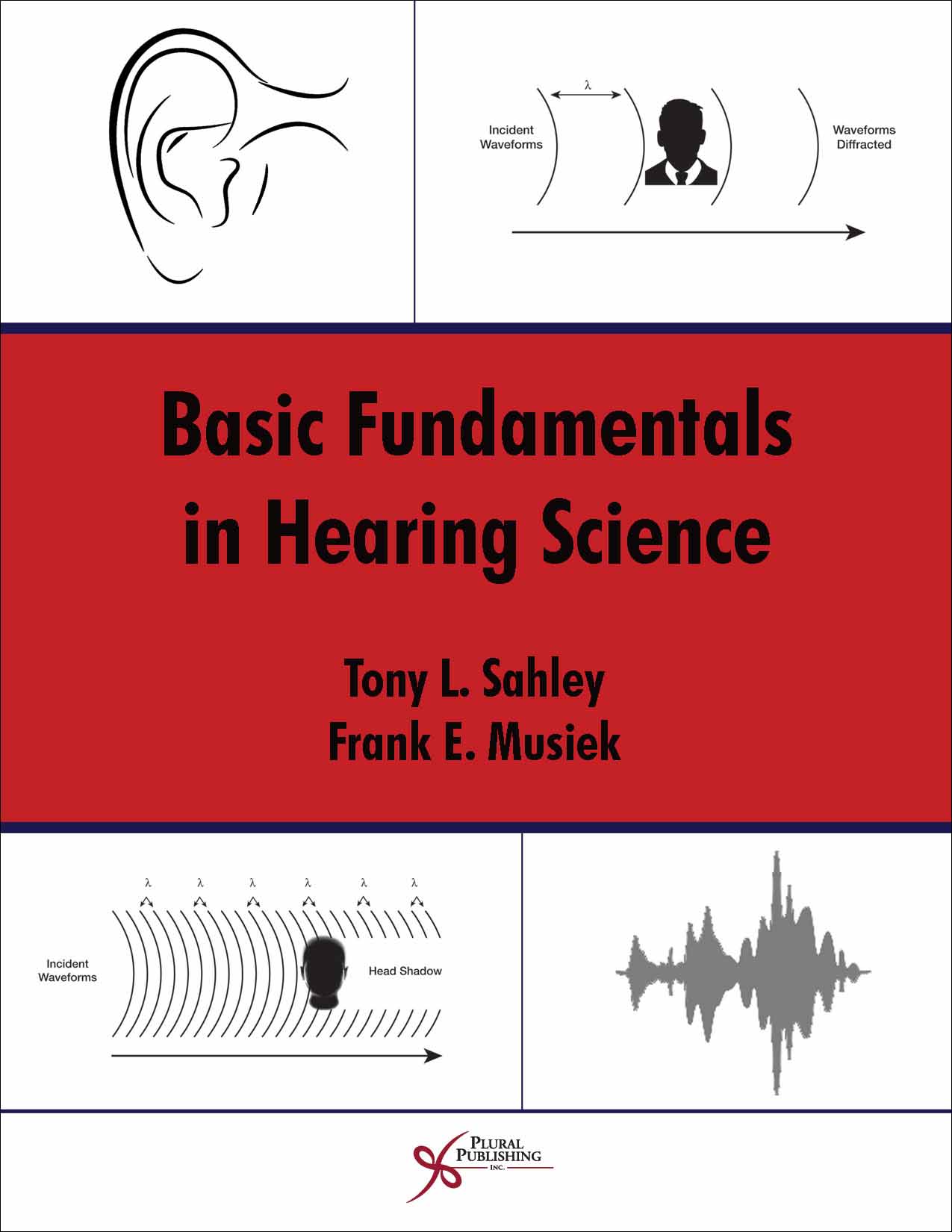
Basic Fundamentals in Hearing Science
First Edition
Tony L. Sahley, Frank E. Musiek
Details: 704 pages, B&W, Hardcover, 7" x 10"
ISBN13: 978-1-59756-549-3
© 2016 | Available
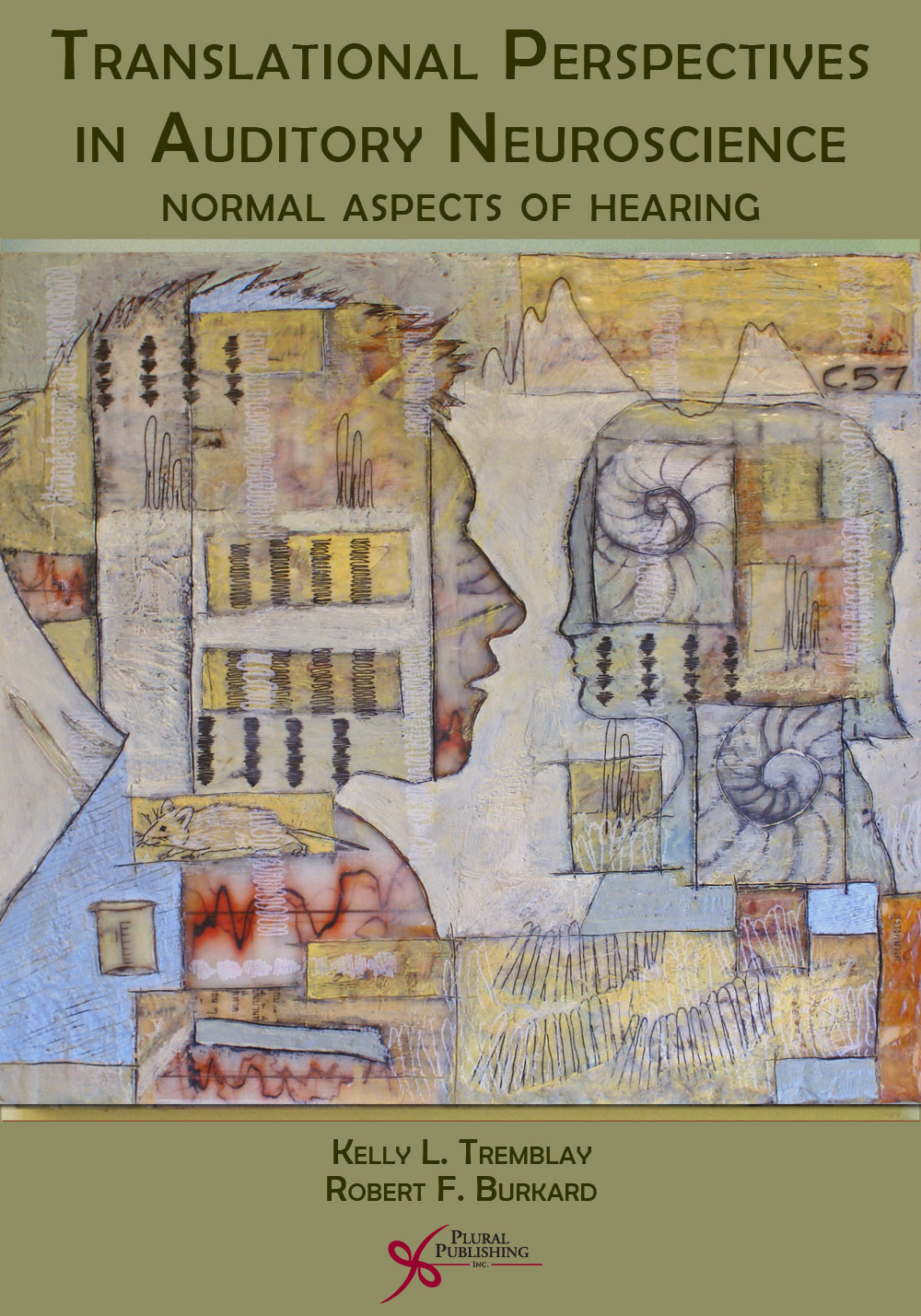
Translational Perspectives in Auditory Neuroscience: Normal Aspects of Hearing
First Edition
Kelly Tremblay, Robert F. Burkard
Details: 488 pages, Full Color, Hardcover, 8.5" x 11"
ISBN13: 978-1-59756-202-7
© 2012 | Available
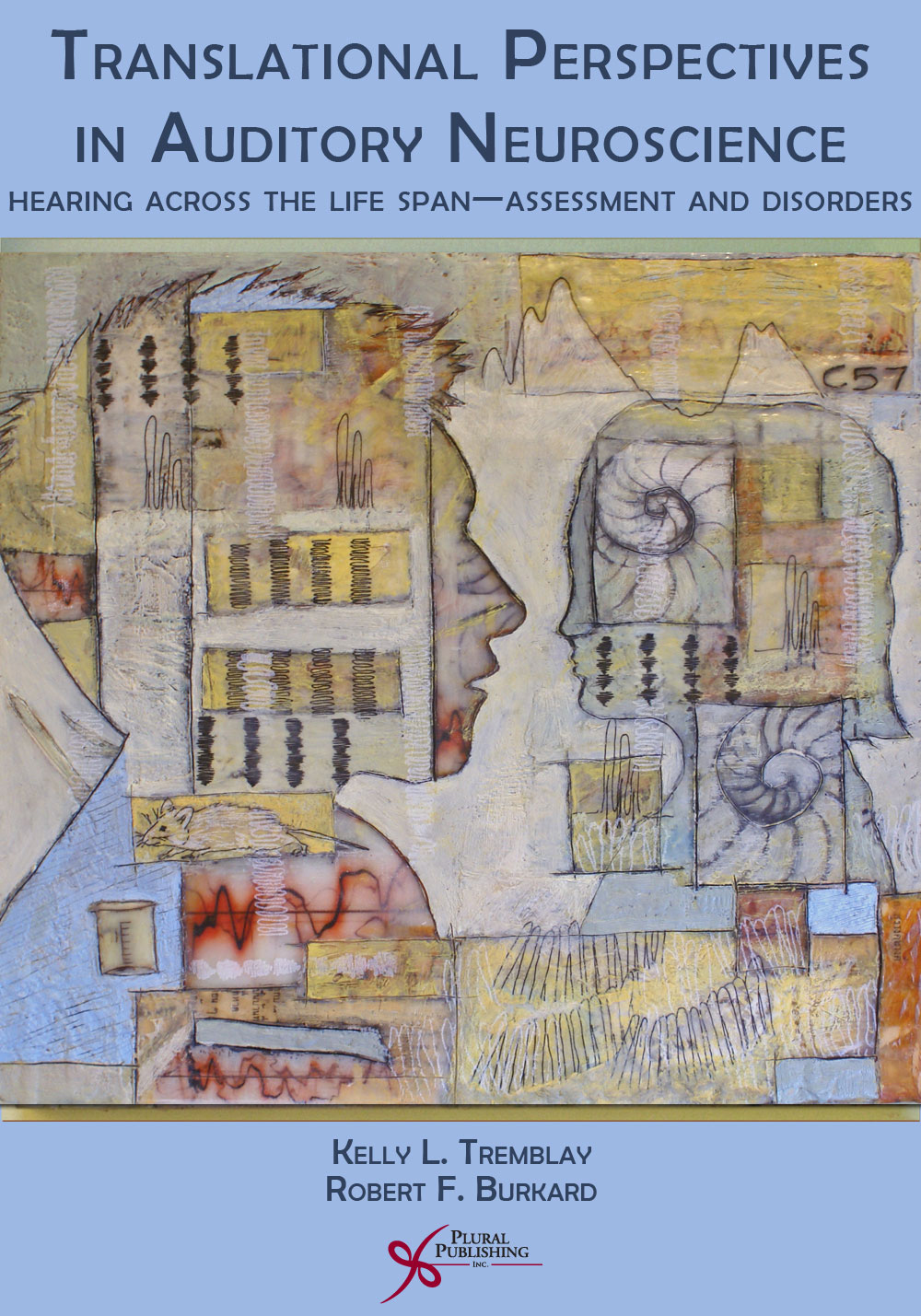
Translational Perspectives in Auditory Neuroscience: Hearing Across the Life Span - Assessment and Disorders
First Edition
Kelly Tremblay, Robert F. Burkard
Details: 336 pages, Full Color, Hardcover, 8.5" x 11"
ISBN13: 978-1-59756-467-0
© 2012 | Available
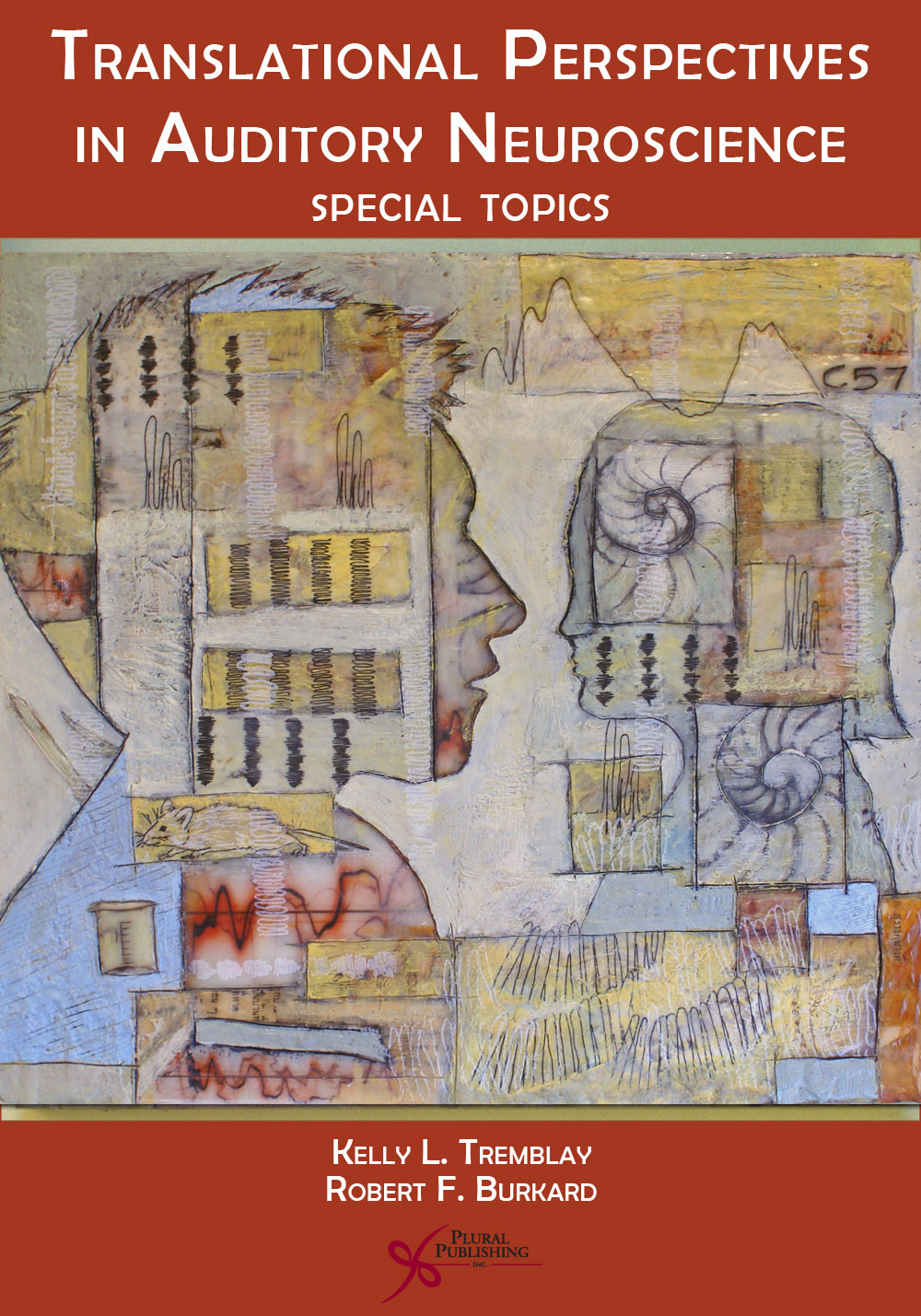
Translational Perspectives in Auditory Neuroscience: Special Topics
First Edition
Kelly Tremblay, Robert F. Burkard
Details: 216 pages, Full Color, Hardcover, 8.5" x 11"
ISBN13: 978-1-59756-468-7
© 2012 | Available
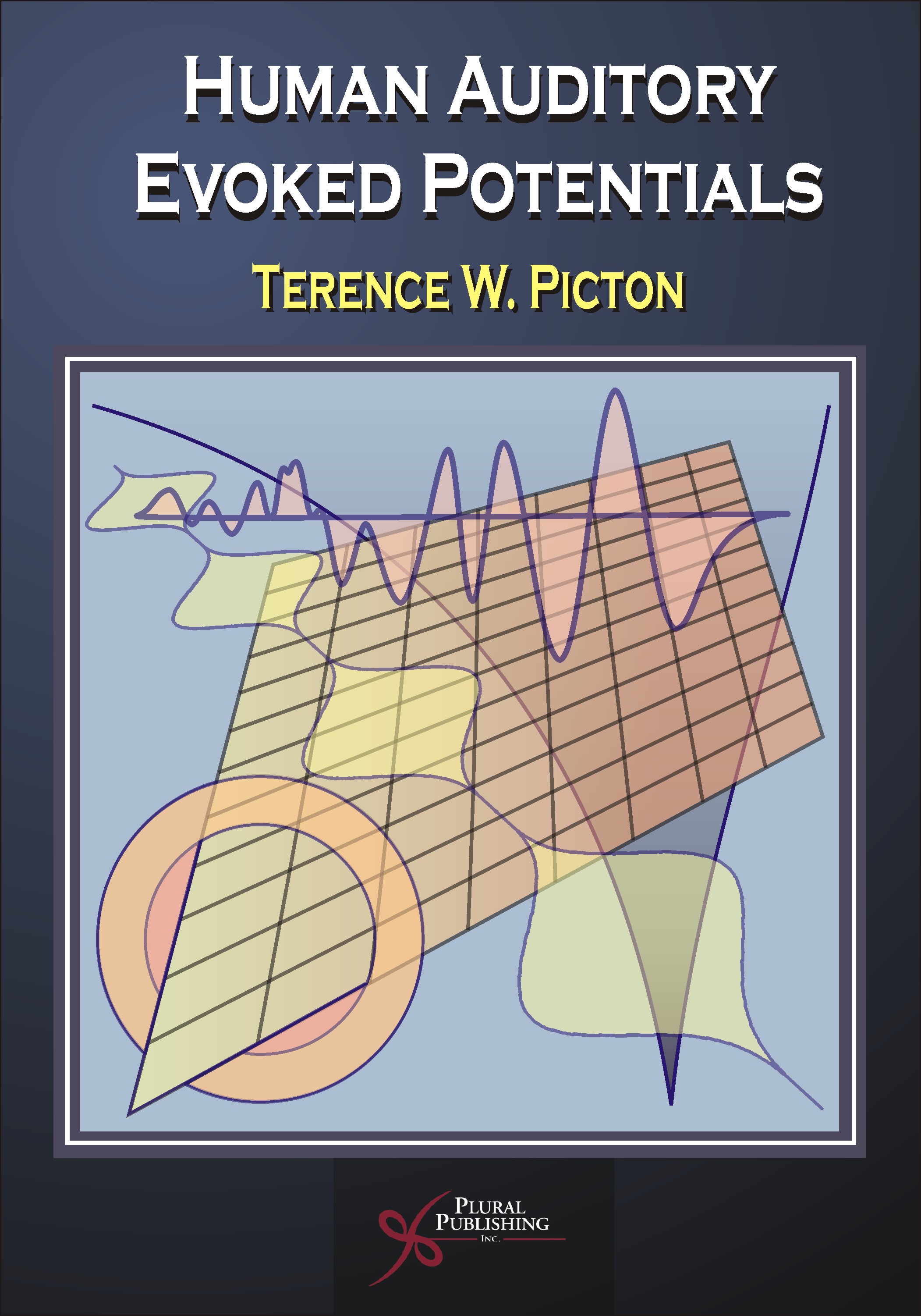
Human Auditory Evoked Potentials
First Edition
Terry Picton
Details: 648 pages, B&W, Hardcover, 7" x 10"
ISBN13: 978-1-59756-362-8
© 2011 | Available
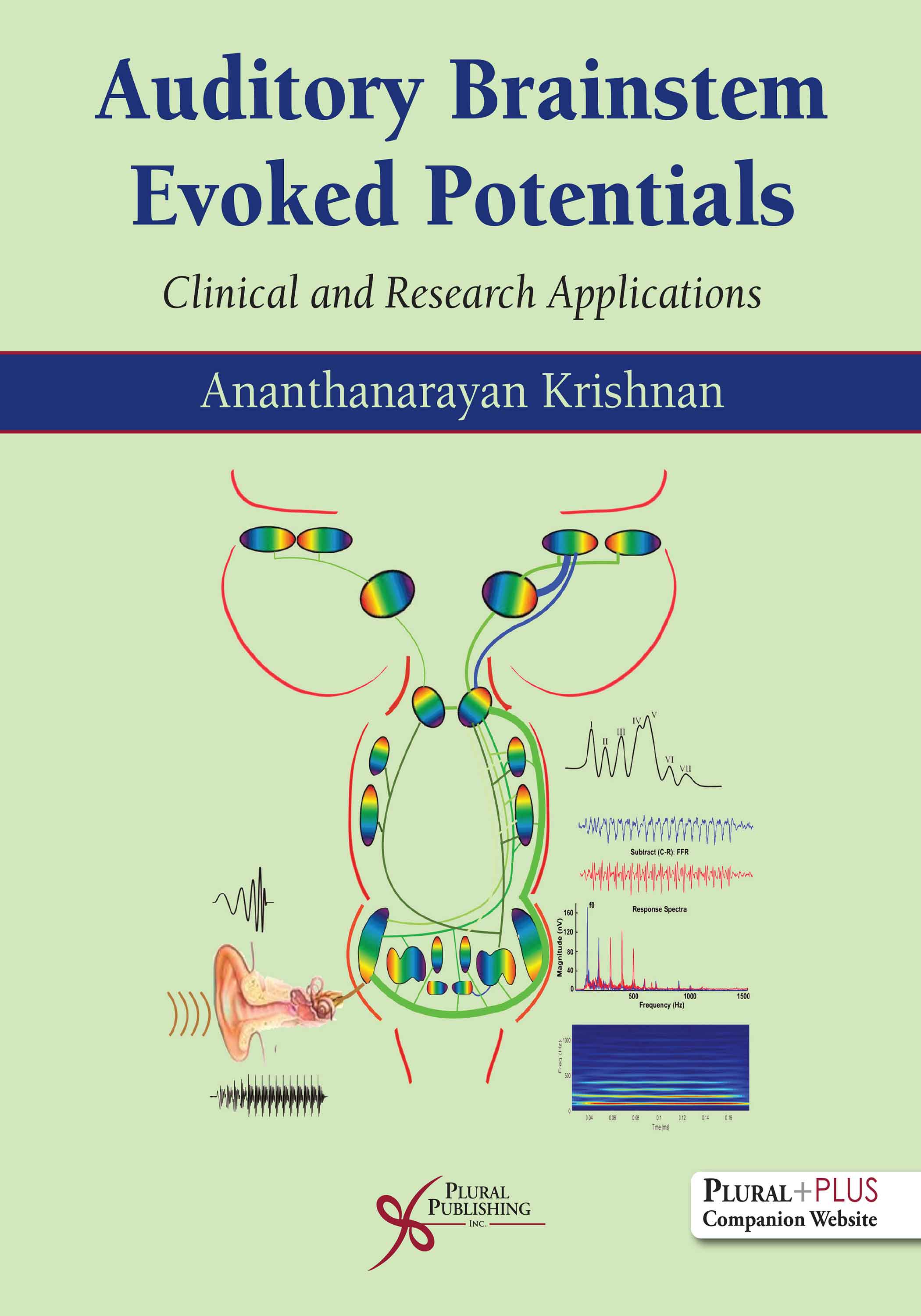
Auditory Brainstem Evoked Potentials: Clinical and Research Applications
First Edition
Ananthanarayan (Ravi) Krishnan
Details: 379 pages, B&W, Softcover, 8.5" x 11"
ISBN13: 978-1-63550-239-8
© 2023 | Available
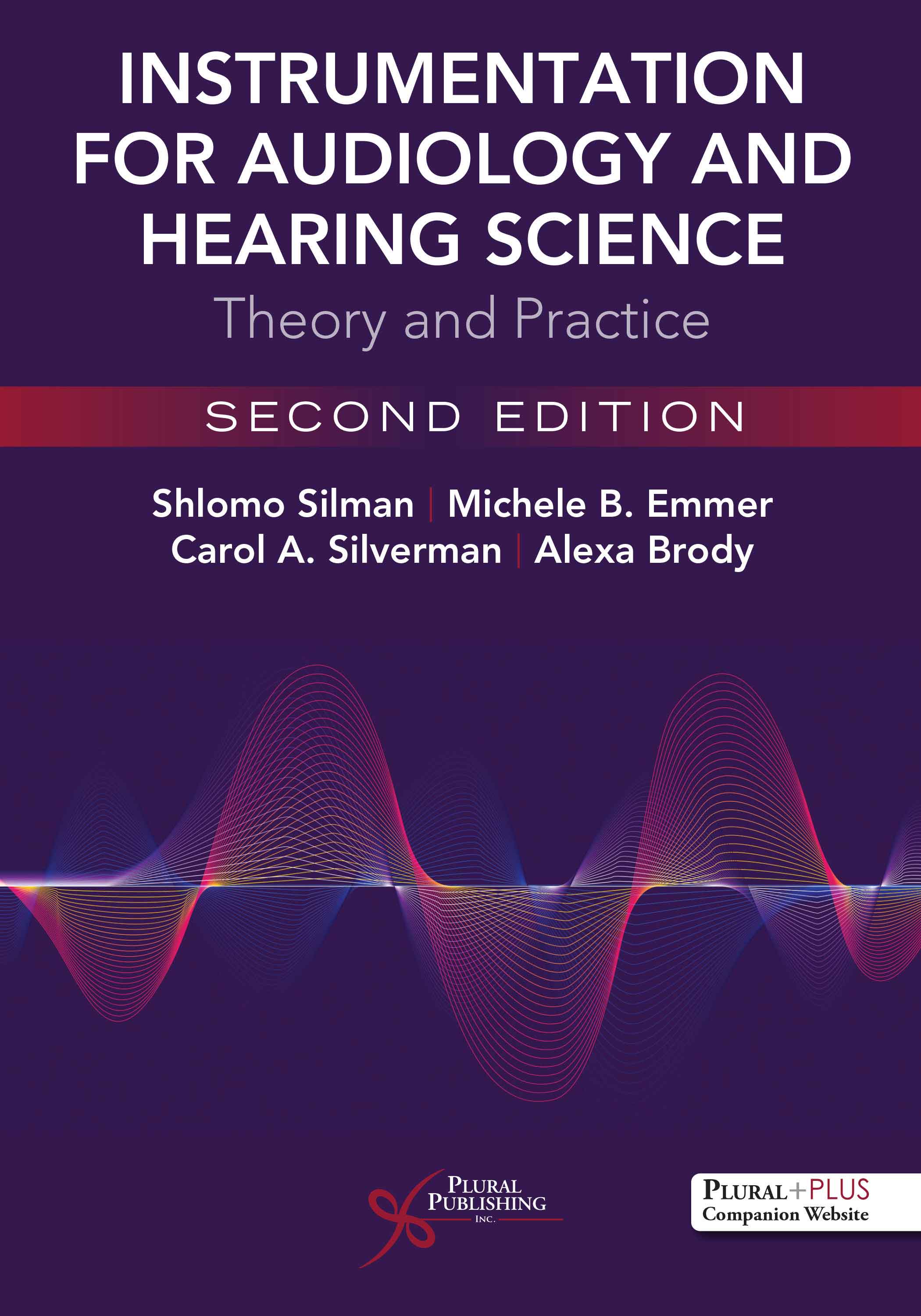
Instrumentation for Audiology and Hearing Science: Theory and Practice
Second Edition
Shlomo Silman, Michele B. Emmer, Carol A. Silverman, Alexa Brody
Details: 338 pages, B&W, Softcover, 7" x 10"
ISBN13: 978-1-63550-226-8
© 2023 | Available


